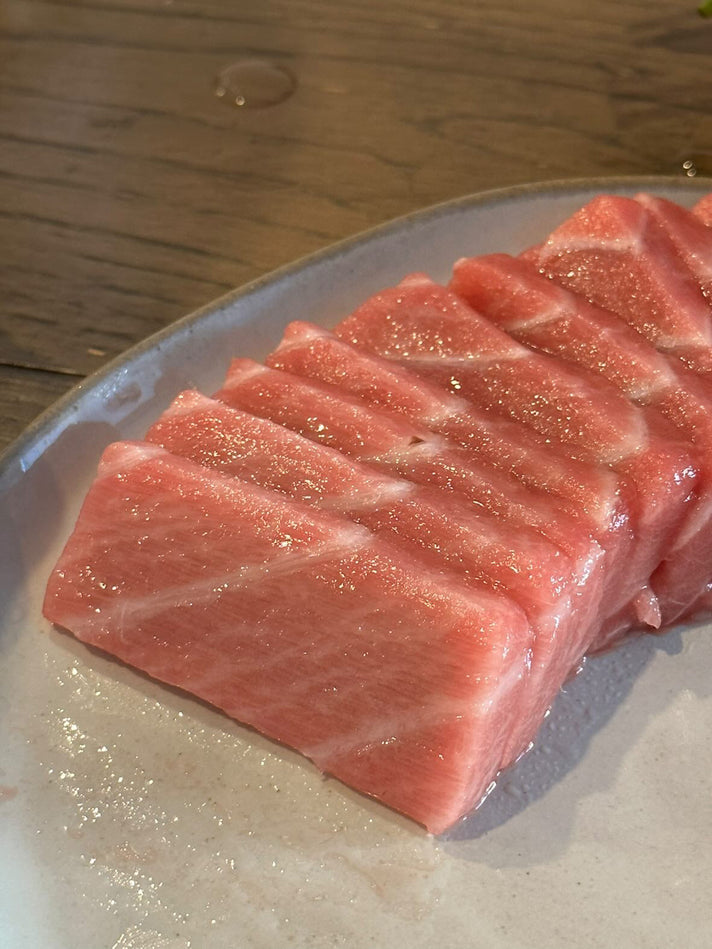
What Is Toro? Discovering the Art of Tuna Belly: Otoro vs. Chutoro
Among sushi lovers, the word “toro” instantly sparks excitement. It refers to the prized fatty belly of the tuna — a cut so rich and tender that it quite literally melts in your mouth.
But did you know there are different types of toro?
Meet Otoro (오토로) and Chutoro (츄토로) — two incredible cuts from the same fish, each offering a unique taste of luxury.

Where Does Toro Come From?
Toro is cut from the belly of the bluefin tuna (참다랑어). This part of the fish has the highest fat content — a marbling that’s rare in seafood but reminiscent of wagyu beef.
-
Otoro (오토로): The fattest, most marbled part of the belly, taken from the underside near the head. It’s extremely tender with a buttery, melt-in-your-mouth texture.
-
Chutoro (츄토로): The mid-fat belly, a perfect balance between richness and a clean, meaty texture. It offers a slightly firmer bite but still has that coveted toro flavor.
In Japan and Korea, these cuts are the highlight of any sushi or sashimi experience. They’re typically served last — the grand finale — to end your meal on the richest note possible.

Why Toro Is So Coveted
In both Korean and Japanese culinary culture, toro is more than just a cut of fish. It’s a luxury ingredient, traditionally reserved for celebrations, special omakase meals, or premium gifts.
Why is it so rare?
-
A large bluefin tuna might only yield a few pounds of toro.
-
True toro-grade cuts require exacting standards for fat distribution and freshness.
-
Its flavor and texture degrade quickly without expert handling — making quick freezing and vacuum packaging essential.
That’s why we process our toro at a HACCP-certified facility in Korea, where it's sliced, flash-frozen, vacuum-sealed, and labeled for peak quality.
 How to Enjoy Toro at Home
How to Enjoy Toro at Home
Eating toro doesn’t have to mean booking a seat at a high-end sushi bar. With premium pre-sliced toro, you can enjoy this delicacy at home:
-
Sashimi-style: Serve chilled with a dab of wasabi and a light brush of soy sauce.
-
Nigiri: Lay it gently over hand-formed rice, optionally with a touch of grated ginger or yuzu zest.
-
Korean-style hoe (회): Wrap in seaweed or pickled radish with rice and sliced garlic or spicy gochujang.
📌 Pro tip: Let it rest at room temperature for 5–10 minutes before eating — this helps the fats soften and flavor to bloom.

Why This Matters
Toro represents the height of seafood craftsmanship. It’s not just about indulgence — it’s about experiencing one of the most revered ingredients in East Asian cuisine, in its purest, most refined form.
Whether you’re a sashimi connoisseur or new to raw fish, toro is a must-try.
And now, thanks to careful sourcing and packaging, you can enjoy it anywhere in the U.S. — no flight to Tokyo or Seoul required.
